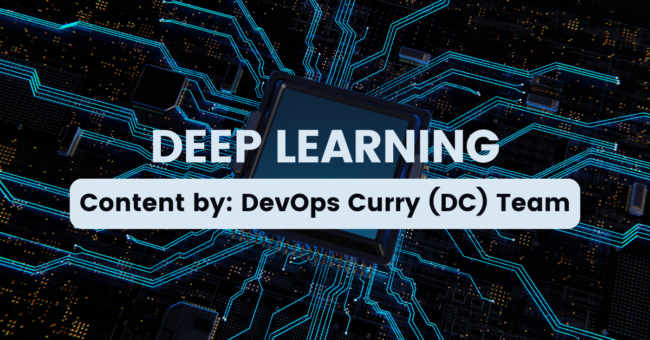In this article, we will be diving into the topic of deep learning and how it is different from machine learning. We will also talk about the basic architecture of deep learning models, their types, their applications, and more.
Introduction to deep learning
Machine learning (ML) is a branch of artificial intelligence that focuses on building machines that can learn on their own. However, ML models cannot learn from just any data. They can process only structured and well-labeled data, and any unstructured or unlabeled data needs to be refined before feeding it to ML models.
Deep learning is a subset of machine learning and AI
A more evolved subset of machine learning is deep learning which closely resembles the human brain and its decision-making process. Deep learning models do not necessarily require structured data and can work with a variety of data effortlessly. Moreover, this ability to learn autonomously and respond in a humanistic way has opened up several interesting possibilities such as – AI image recognition, natural language processing (NLP), generative AI, etc. However, although deep learning seems more advanced and powerful than machine learning, both have their advantages and disadvantages. That said, let’s learn about the major differences between the two…
Deep learning vs Machine learning
Deep learning and machine learning differ in terms of their functionality and complexity. Following is a table highlighting the major differences between both of them…
Major differences between deep learning and ML
How does deep learning work
Deep learning works on a network of interconnected nodes (or neurons) called artificial neural networks (ANNs). It is similar to how a human brain comprises millions of interconnected neurons and nervous tissue. A typical ANN is composed of 3 layers:
- Input layer: This layer introduces the data into the neural network.
- Hidden layer: The number of hidden layers can vary from one to many. If more than one hidden layer is present within a neural network, it is called a deep neural network. Most of the processing happens in this layer.
- Output layer: The output layer presents the final output. The number of nodes in an output layer can vary based on the diversity of output – for example, a yes or no output requires 2 nodes.
Different types of deep learning models perform various functions using a similar layered architecture. Let’s discuss some of them now…
Types of deep learning models
- Convolutional neural networks: CNNs or ConvNets are designed mainly for computer vision tasks such as face recognition, object detection, and image classification. To identify an object in an image, computers look for specific features associated with that object. Before CNNs, these features were extracted manually through a process of feature engineering. However, with the development of CNNs, feature extraction became an autonomous process, thus saving time and effort. Although they are more powerful than other neural networks, they require high computational power to match their performance and highly trained experts for their maintenance.
- Recurrent neural networks: Just like how CNNs mostly deal with images, RNNs mostly deal with text and language. They are used in NLP, speech recognition, and language translation softwares. They support Google Translate, voice search, and voice assistants like Alexa and Siri. They are also used in predictive analysis such as in stock market predictions. RNNs are of 3 types – one-to-many, many-to-many, and many-to-one. Some of the limitations of this model include slow training time and complexity in optimization, especially with a high number of hidden layers.
- Generative adversarial networks: GANs are made up of 2 components – a generator and a discriminator. The generator uses training data to produce fake but realistic data while the discriminator tries to identify whether this data is real or fake. As long as the discriminator can identify the fake data, the generator keeps on creating even more realistic data. Because of this back and forth between the two, it is referred to as adversarial. The GAN model has 2 major advantages – it can train itself and it can produce very realistic data.
Benefits
- Deep learning models require less human interference. They can perform feature extraction on their own and do not necessarily require structured or labeled data.
- They can learn on their own as they are fed more and more data.
- These models are also highly accurate. For example, they are better at grasping the intended meaning in a text than the literal meaning.
- Deep learning models have a wider range of functionalities than traditional machine learning models.
Limitations
- Deep learning models are totally dependent on the data they are trained on. Hence, any bias or inaccuracy in the training data may also be reflected in its output.
- They require large amounts of data to produce accurate results. Consequently, they need high computational power and efficient hardware systems.
- A major disadvantage of deep learning models is they operate within black boxes. Black boxes refer to the hidden calculations and decision-making process of deep learning models through which they arrive at a particular conclusion. Hence, their results are unexplainable which can lead to a lack of trust between the model and the user.
Conclusion
Deep learning has narrowed the gap between humans and computers. By mimicking natural human intelligence and decision-making, deep learning models continue to replace the manual workforce in various industries. However, being more advanced, it cannot replace ML completely, which is still useful for tasks requiring mathematical or objective analysis rather than deep learning’s subjective analysis. Additionally, the output produced by deep learning models is not entirely trustworthy due to their ‘black box’ nature. This has led to the development of explainable AI which can trace an AI model’s output to its sources and thus, uncover the hidden black boxes.

